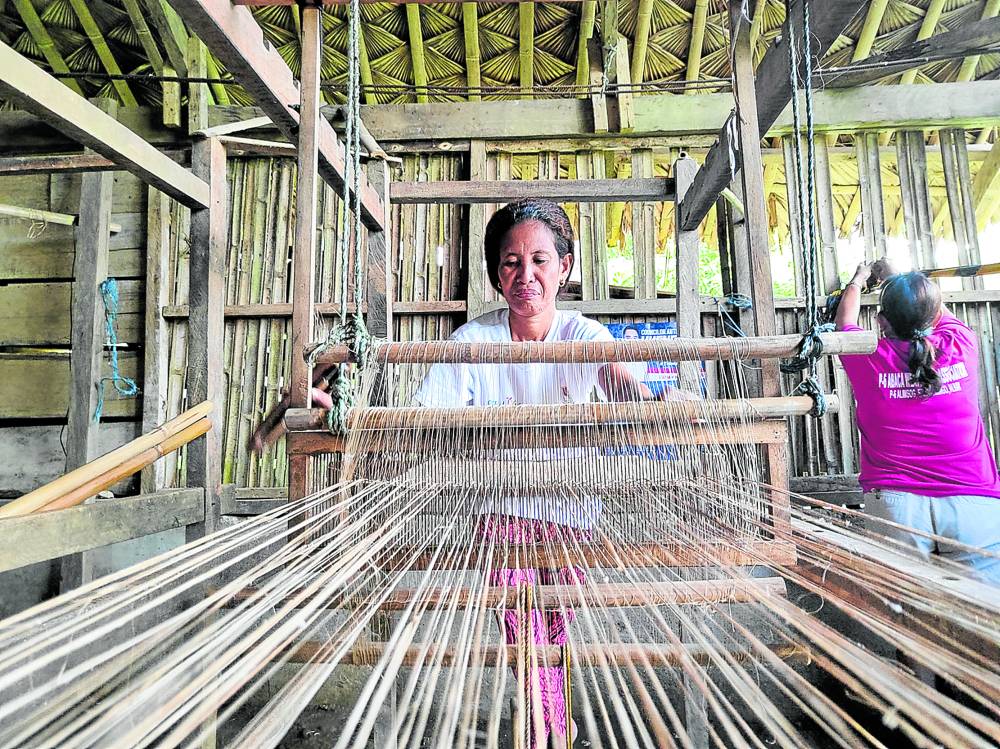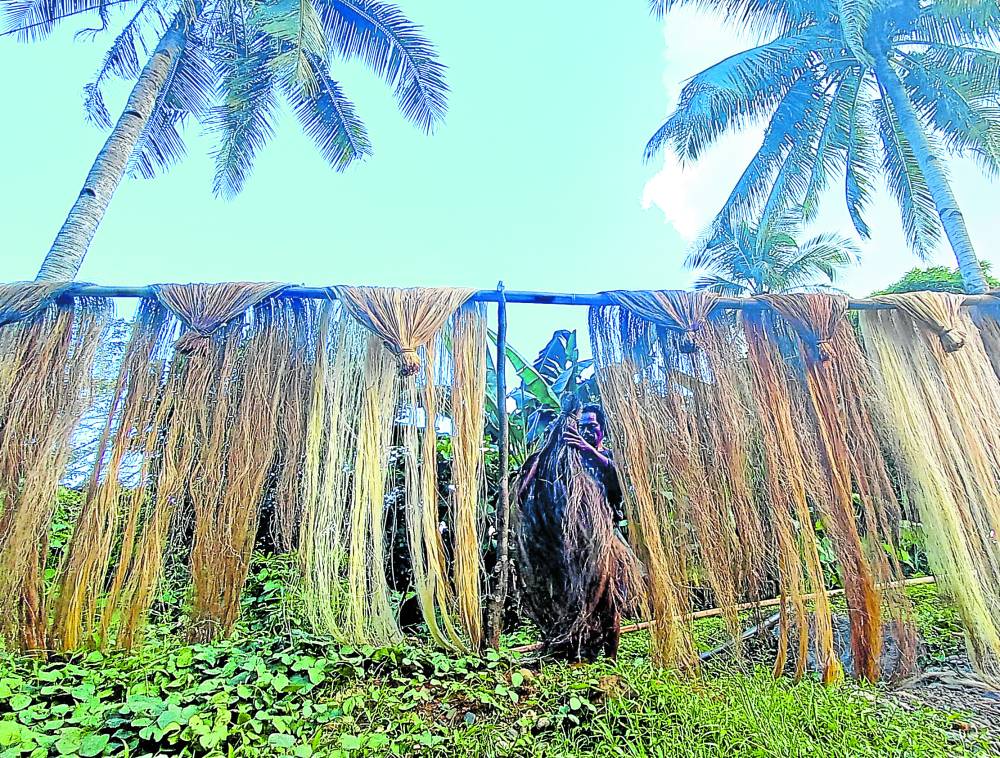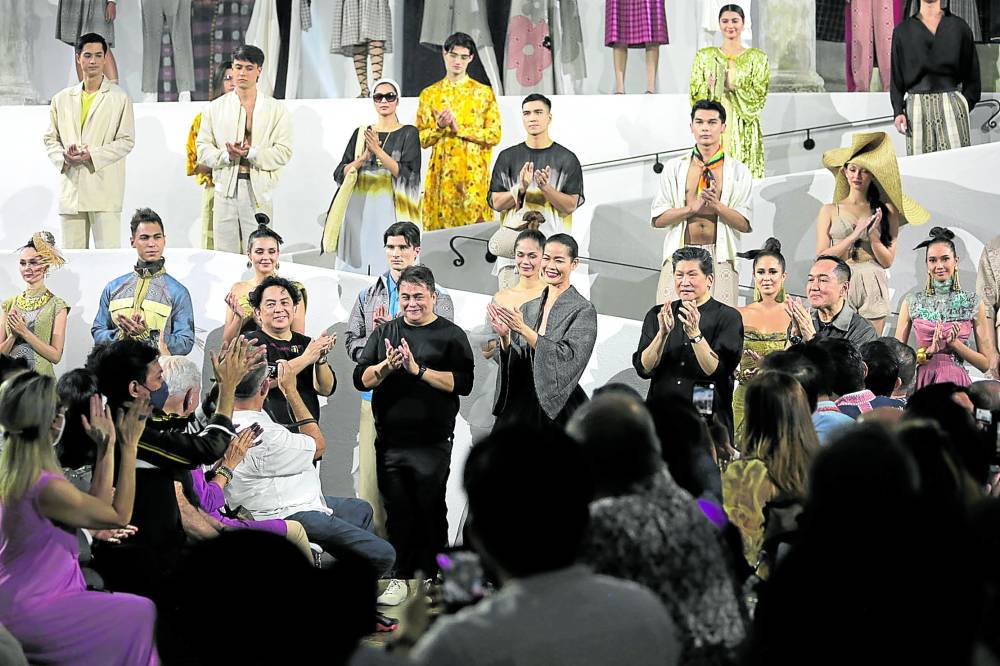The Negros Silk Project
Date Posted January 2018
Sericulture or silkworm culture, the rearing of silkworm for the production of raw silk, is an emerging industry in the Philippines. Bago City in Negros Occidental produces some of the best quality silks in the world. Hundreds of farmers from Bago and other neighboring towns are supported by this industry. Farmers rear silkworm whose cocoons are produced into silk yarns which are then used as raw material for Barong Tagalog and other world-class silk products
Ms. Thelma Watanabe, President of Negros Silk Producers’ Association, Inc., was one of the pioneers who attended the initial silk training in Japan and introduced silkworm rearing and raw silk production to the farmers and women of Bago City.
The Negros silk project is managed by the Organization for Industrial, Spiritual and Cultural Advancement (OISCA) - International, an NGO founded and based in Japan. The organization extends help to developing countries mostly in Asia and the Pacific with agriculture as its main thrust.
The OISCA silk project in Negros started in 1999 with the support of the Japan International Cooperation Agency (JICA) with the aim to help improve the living conditions of the people of Negros Island.
Through the assistance of JICA, OISCA was able to develop a 26-hectare farmland and sericulture training center located at Barangay Tabunan, Bago City, Negros Occidental. It has a silk reeling factory that produces tons of silk yarns which are bought by clothing manufacturers across the country and are exported to various cities around the globe. The project also includes the production of silkworm eggs and the growing of mulberry trees as food for the silkworms.
Ms. Watanabe claims that the lives of the local farmers have improved significantly due to the project. The project targets to help low-income farming families in the Negros Island by engaging in silkworm rearing for cocoon production. Before, the people in Negros were only dependent on sugar cane farming and charcoal making. Upon the introduction of the project, areas not planted with sugar cane were identified for the establishment of mulberry farms. Intensive trainings and seminars on sericulture and silk weaving were conducted for farmers and extension workers at the OISCA-Bago Training Center and in Japan. Silkworm nurseries and weaving centers in the northern and southern parts of Negros were likewise established to further support the farmers’ sericulture activities.The OISCA silk weaving centers produce 1.5 tons of silk yarn annually which accounts for 90% of the country’s total production. This provides income for hundreds of local farmers engaged in sericulture and related activities such as taking care of mulberry fields and weaving.
Ms. Thelma Watanabe donning an OISCA Negros Piña-Silk Filipiniana at the Phil. Independence Day Parade in New York City (7 June 2015).
Silk is widely popular among the locals since it is considered as the One Town, One Product (OTOP) of Bago City and the banner OTOP of the Province of Negros Occidental. Around 80% of high quality silk produced in the city are sold to weavers in Aklan and the remaining 20% to groups based in Manila. The silk byproducts, pupae and silk of lower quality, are also being manufactured into other products. Thousands of kilograms of pupae are used as highly nutritious feed for chicken and fish, while the lower quality silk is made into summer clothing, shawls, and table cloth, among other things.
Foreign visitors regularly come to the province to observe and study the project with the intention of starting their own silk production business in their respective countries. “A lot of visitors, both local and international, are drawn to visit the project to check out particularly the hand-woven cloth,” Watanabe shared.
The silk produced under the OISCA project was highlighted during the Summit Meeting of the Asia-Pacific Economic Cooperation (APEC) which took place in Manila on 18-19 November 2015. The silk was added to the fibers used in weaving the piña-silk Barong Tagalog, the Philippine formal attire worn by the national leaders and their spouses during the event which include Japan’s Prime Minister and Mrs. Shinzo Abe, United States President Barack Obama, Canadian Prime Minister Justin Trudeau, Mexican President Enrique Peña Nieto and President Park Geun-hye of the Republic of Korea.
Now, with the expanding market for silk worldwide, OISCA hopes to increase the number of farmers engaged in sericulture and the current volume of production under the project.
Watanabe said that supply of silk is still low in the country considering that the demand continuous to rise yearly here and abroad. With this, more farmers are encouraged to continue to produce good quality cocoons. The project gives incentives by giving awards to model sericulture farmers. To involve more farmers and increase silk production, sericulture extension centers were also established in the municipalities of Mabinay, Canlaon and San Carlos.
During a visit by the Department of Agriculture (DA) Secretary Emmanuel Piñol at the OISCA sericulture center last 29 September 2017, the DA chief lauded the initiatives of OISCA in advancing the silk industry of Negros Occidental. He promised to give 50 rearing houses worth P2 million, and one rearing machine worth P7 million to OISCA to support the expansion of the Negros silk project.
DA Secretary Emmanuel Piñol at the OISCA sericulture center during his visit last September 2017. Photo credits: Reuters/Edgar Su & Da-rafid Rfo VI.
















